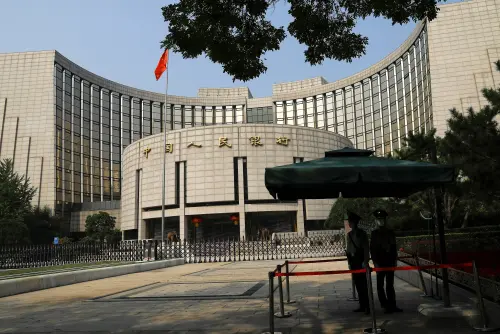China is likely to maintain its benchmark lending rates unchanged on Thursday, according to a Reuters poll, as authorities must balance financial stability with the need for further economic stimulus amidst new trade tensions facing Beijing.
Despite shifting to a more accommodative monetary policy stance this year, the central bank has been cautious in its recent cash injections due to yuan depreciation and compressed net profit margins at banks.
The Loan Prime Rate (LPR), typically applied to banks' top clients, is determined monthly based on proposals submitted by 20 commercial banks to the People's Bank of China (PBOC).
Results from a recent Reuters survey of 30 analysts indicated unanimous expectations for stability in both the one-year and five-year LPRs.
China's central bank recently stated its intention to adjust monetary policy accordingly to support the economy when necessary, given the growing external pressures, notably from an escalating trade dispute with the United States under President Donald Trump.
Xinquan Chen, an economist at Goldman Sachs, highlighted the ongoing challenge for the PBOC to balance economic support with financial stability, particularly due to concerns over foreign exchange stability.
Chen suggested that persistent deflationary pressures in China justify substantial monetary easing, proposing two 50-basis-point reductions in banks' reserve requirement ratio (RRR) in the first and third quarters, and two 20-basis point cuts to policy rates in the second and fourth quarters.
The depreciation of China's yuan by 2.5% against the dollar post-Trump's election win underscores the impact of U.S.-China trade tensions, with the yuan falling more than 12% against the dollar from March 2018 to May 2020.
Traders noted that robust loan figures, surpassing expectations and hitting record highs in January, have lessened the immediate need for monetary easing.
Citigroup analysts anticipate that rate and RRR cuts will likely commence in the second quarter of 2025, as fiscal policy adjustments are more challenging to implement swiftly.
Looking ahead, analysts believe details from the upcoming National People's Congress (NPC) will provide crucial insights into fiscal policy direction for the first half of the year.
